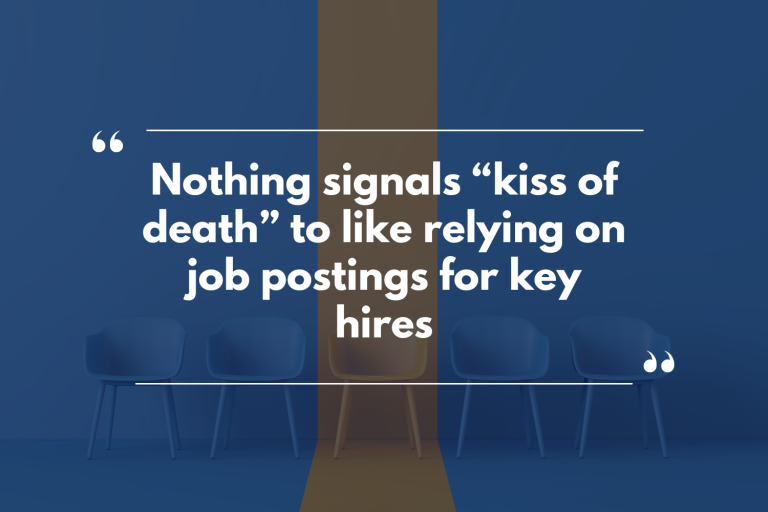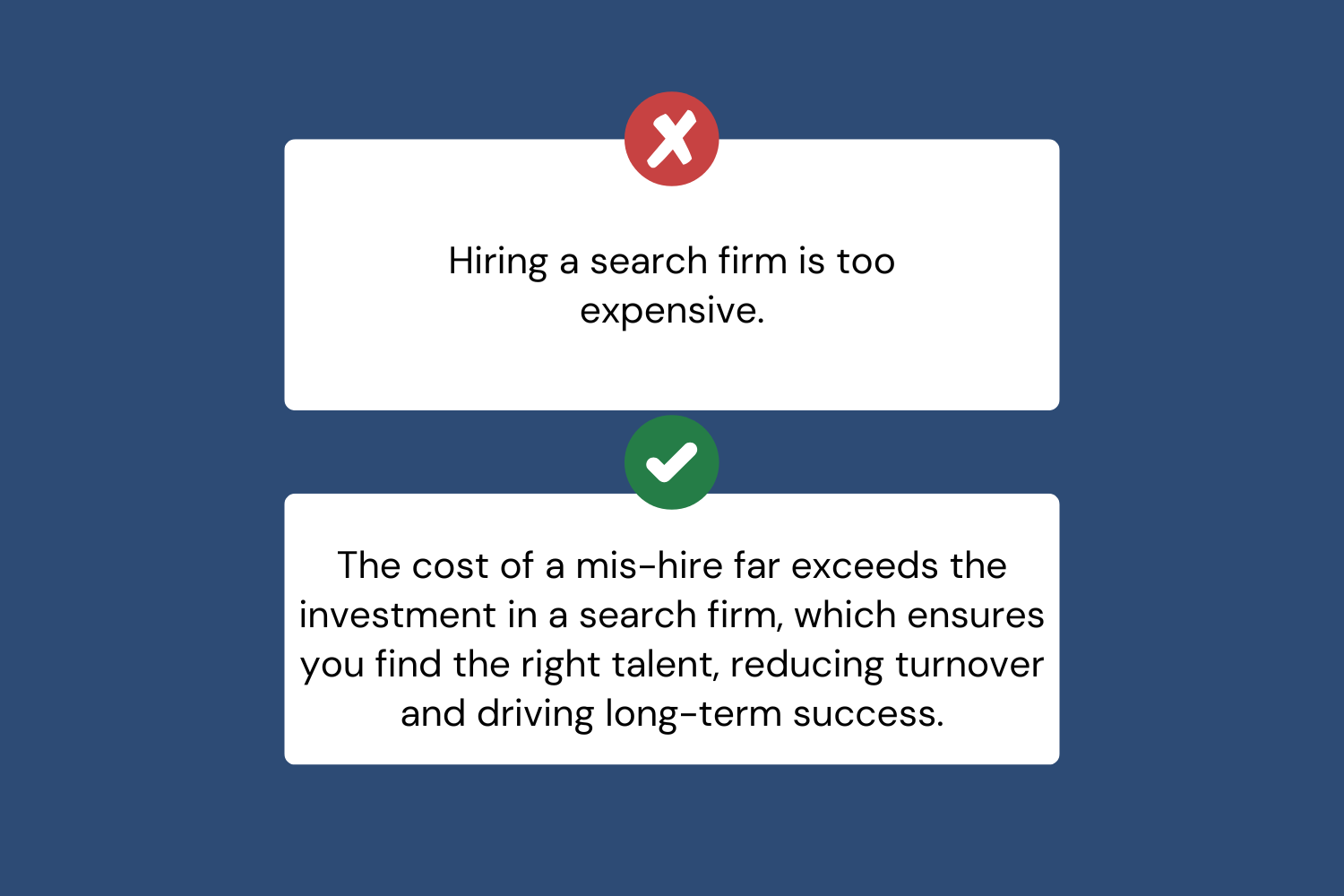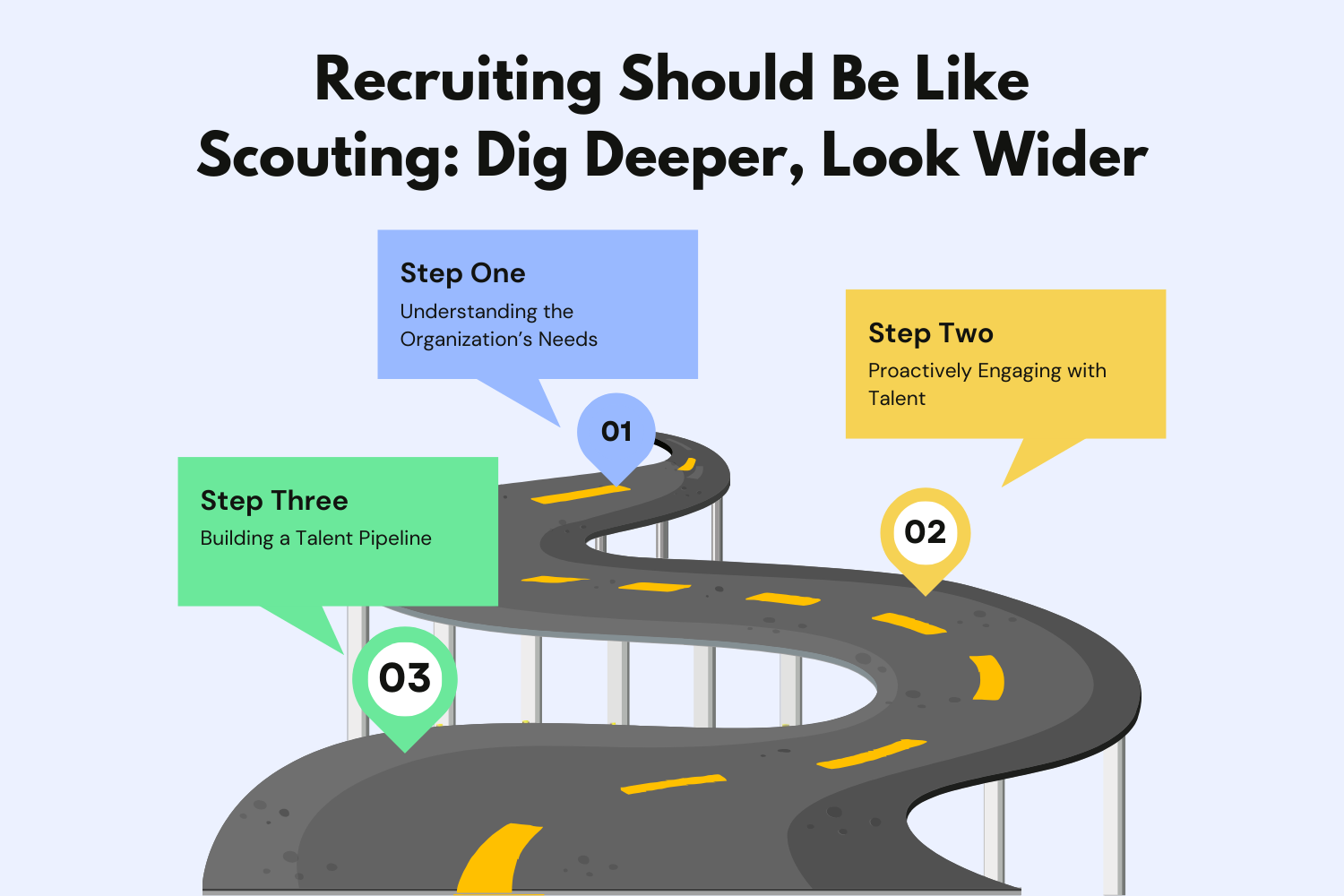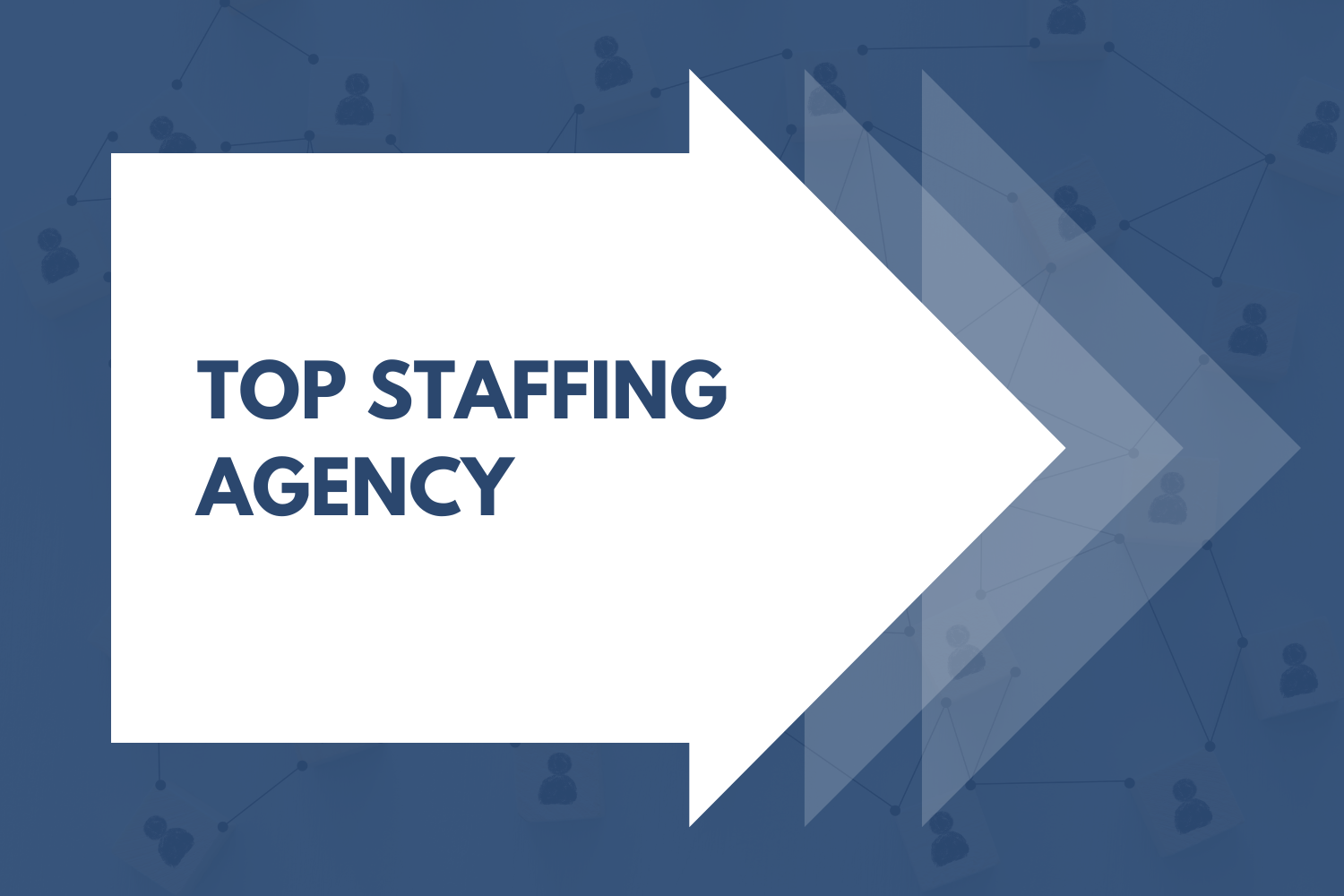
Nothing signals “kiss of death” to like relying on job postings for key hires. Every important role deserves a proactive, targeted search by a specialist. When companies sideline their hiring managers and rely on job postings that benefit only job boards — not the organization or its team — the risks to performance and culture escalate.
Hiring practices reflect a company’s values, growth priorities, and operational effectiveness. As companies scale, they often move through distinct stages of recruiting — and while it may seem minor, the impact of those shifts can be seismic. Consider the life cycle of a typical company as it grows, focusing on how each change in recruiting strategy can signal the company’s direction and stability:
In early stages, great companies start with rigor — turning to trusted networks and experienced professionals to help secure capital and recruit their initial leadership. These early hires are typically sourced through boutique firms or specialist headhunters who understand the intricacies of the industry, culture, and specific role requirements. This approach gives companies their strongest foundations in talent.
As the company grows, it continues to prioritize quality over convenience, spending up to 30% of target compensation on securing top talent for key roles. Boutique search firms and “SHREK” firms (Spencer Stuart, Heidrick & Struggles, Russell Reynolds, Egon Zehnder, Korn Ferry) often manage these hires. While not inexpensive, these firms provide deep market intelligence and extensive vetting, which, for early-stage or scaling businesses, is invaluable.
Over time, budget constraints or perceived efficiencies lead companies to reduce spend per hire, opting for lower-cost contingent recruiting models. Here, a less-engaged, less-personalized approach begins to take hold, with firms being paid only on successful placement rather than on a retained basis, which lowers the commitment and may affect candidate quality. In many cases, senior-level roles are included, diminishing the hands-on approach needed for these hires.
When companies reach a stage where it seems “simpler” to bring recruiting in-house, they might not fully understand the internal costs associated with hiring top recruiters. A seasoned recruiter commanding a $250K salary can be an expensive addition to a payroll, but replacing them with mid-level or junior recruiters compromises the depth of the hiring process. This shift from quality to cost-saving can ripple through the organization, especially in leadership roles.
Finally, when budgets tighten further, job postings become the primary sourcing tool. But while postings are easy and inexpensive, they can fail to reach passive or highly-qualified candidates, skewing applicant pools toward lower-quality or less-experienced individuals. It’s here that we see the correlation between job posting reliance and performance decline:
- Attrition Increases: Without dedicated expertise, poor hires become more common, and frustration rises.
- Time-to-Fill Grows: Positions stay open longer, burdening teams and affecting productivity.
- Hiring Team Morale Declines: Teams lose confidence in their ability to find great talent.
- Quality and Revenue Drop: Quality talent is missed, resulting in underperformance across departments, eventually impacting revenue.
- Layoffs Follow: With reduced revenue, the business enters a decline, often leading to layoffs.
Relying on job postings for crucial hires can be a short-term cost-saving measure but comes at a long-term expense. Instead, companies that keep an emphasis on expert-driven, relationship-based recruiting strategies often find that they attract and retain the quality of talent necessary to drive sustainable success. As the life cycle of recruiting practices illustrates, the shift from bespoke search to posting jobs is often a telling indicator of a company’s trajectory.









